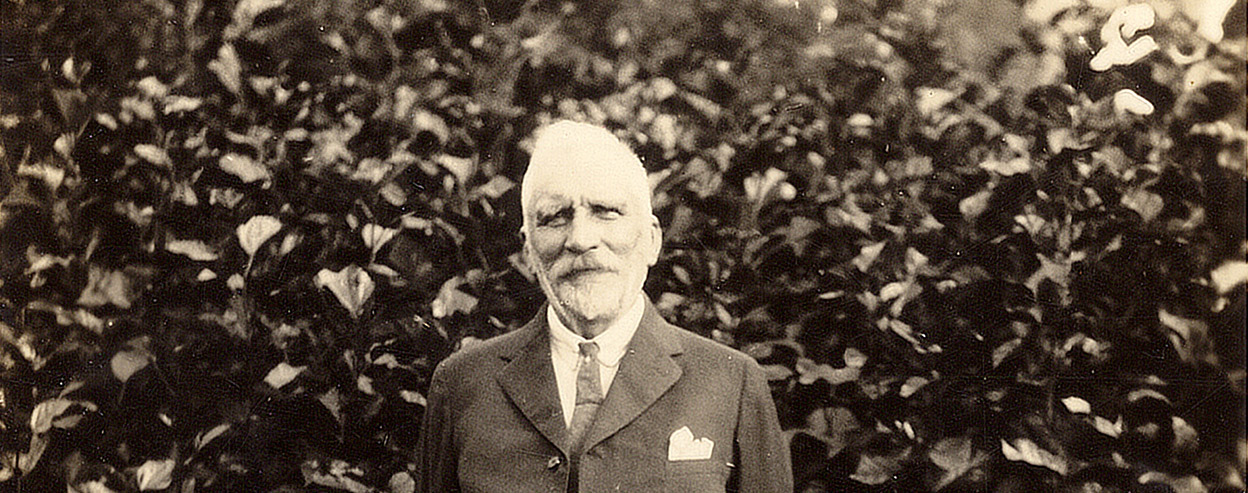Henry Nehrling
1853
Born on May 9, 1853 to Karl Nehrling and Elizabeth (Ruge) Nehrling at the town of Herman, near Howard’s Grove in Sheboygan County, Wisconsin. In his youth he was home-schooled by his parents.
1866
The Nehrling family moved to Plymouth where Henry attended the Plymouth Lutheran parochial school.
1869 – 1873
Attended the German Evangelical Lutheran Teacher’s Seminary (Normal School) in Addison, Illinois, graduating in 1873.
1874
Married Sophia Schoff of Oak Park, Illinois on July 20.
1874–1879
Taught school in Harlem (now Forest Park,) Illinois.
1879–1884
First moved to Texas, and then to Missouri in 1882; during this time he taught in Lutheran schools and began a lifelong study of birds and experimentation with tropical and subtropical plants.
1885
Purchased 40 acres in the German colony of Gotha, 10 miles west of Orlando.
1886
Visited Central Florida in 1886 to inspect his 40-acre parcel; began development of a 5-acre grove and the first 10-acre phase of “Palm Cottage Gardens.”
1887
Was appointed Deputy Collector and Inspector of Customs at the Port of Milwaukee.
1890
Accepted position as Custodian (curator) of the Milwaukee Public Museum. Wrote an essay entitled: “Orchids in South Florida.” At this time he became interested in rubber and fig trees (Genus Ficus).
1891
Published Die Nordamerikanische Vogelwelt (The World of North American Birds).
1893
Visited the Columbian Exposition in Chicago. Nehrling was particularly impressed by
the caladiums exhibited by Adolph Lietz of Brazil, initiating a lifelong pursuit to introduce them into Florida’s landscape by hybridizing and commercially growing more than 1700 new varieties.
Published Volume I of the English version of Die Nordamerikanische Vogelwelt – renaming the book: Our Native Birds of Song and Beauty.
1896
Completed Volume II (English version) of Our Native Birds of Song and Beauty.
1900
Nehrling was presented a certificate, “Token of Appreciation for Efforts to
protect Birds,” by the German Association of Milwaukee.
1901
Left position at Milwaukee Public Museum in December.
1902
Moved to Gotha on January 2nd; in September of the same year his family arrived from Milwaukee to establish their new home in Gotha. (1901-1904 Journal)
1903 – 1904
From July to January—6 months, Nehrling worked as consulting ornithologist to the Philadelphia Commercial Museum. (1901-1904 Journal)
1904
Nehrling’s daughter, Hedwig-Elsie died on June 12.
1906
Began working as a collaborator with the Department of Agriculture’s Bureau of Plant Industries Office of Foreign Seed and Plant Introduction, testing more than 3000 plants. Nehrling’s daughter Hildegard died on November 1.
1908
Wrote German essay: “Die Amaryllis”, published in Berlin.
1911
Nehrling’s wife, Sophia, died on November 11. Sophia was buried in the small Gotha Lutheran cemetery next to her two daughters, Hedwig and Hildegard.
1916
Henry Nehrling married Betty B. Mitchell on June 7.
1917
Freeze killed many valuable plants at Gotha, causing Nehrling to seek property in 1919 in South Florida near Naples, where in 1921 he purchased 13.5 acres and established a second garden: “Tropical Gardens and Arboretum.”
1922 – 1929
Wrote numerous articles on tropical and sub-tropical plants published in a weekly paper entitled: “The American Eagle,” published in Estero, Florida.
1927
Started a nursery in Sebring, Florida, a business arrangement that was soon dissolved. (In 1925 Florida had begun to experience an economic depression that would lead into the Great Depression of 1929.)
On April 27, Thomas A. Edison, accompanied by his wife, spent the day with Nehrling at his Naples gardens. Freezing temperatures in January and March would cause Nehrling to lose many of his Ficus plants at this garden.
1929
At the annual convention of the Florida Federation of Garden Clubs, Dr. David Fairchild, representing the Council of the American Genetic Association, awarded Henry Nehrling the Frank N. Meyer Memorial Medal for his distinguished field work and exploration for the Office of Foreign Plant and Seed Introduction, US Department of Agriculture, Bureau of Plant Industry.
His health greatly deteriorating, Nehrling returned to Gotha where he died at his home at Palm Cottage Gardens on November 22. He was later interred at Woodlawn Park cemetery in Gotha, Florida.
1930
The Plant Patent Act was passed into Federal law, spurred by the work of Luther Burbank in California. Thomas Edison spoke before Congress in its favor – aware that Nehrling had died without receiving any financial benefit from the many plant varieties he introduced and hybridized.
Publications by Henry Nehrling:
Books and Essays:
Essay: “Orchids in South Florida,” 1890.
Die Nordamerikanische Vogelwelt, The World of North American Birds, 1891.
Our Native Birds of Song and Beauty, Volume I, 1893, and Vol. II, 1896.
Essay: “Die Amaryllis,” 1908
The Plant World in Florida, 1933.
My Garden in Florida and Miscellaneous Horticultural Notes, 1944.
Nehrling’s Early Florida Gardens; Abridged and edited by Robert W. Reed, 2001.
Nehrling’s Plants, People, and Places in Early Florida; Abridged and edited by Robert W. Reed, 2001.
Contributions to Periodicals:
Anzeiger des Westens
The American Eagle
Journal of the International Garden Club
Die Gartenwelt
Garden
Gardener’s Chronicle
Garden and Forest
Der Haus and Bauernfreund
Milwaukee Germania Sonntagspost
Sonntagsblatt der New Yorker Staats Zeitung
Tágliche Illinois Staats Zeitung
Der Westen
Researched and Revised by Gotha and Nehrling Gardens Historian: Kathleen Klare—July 27, 2014

